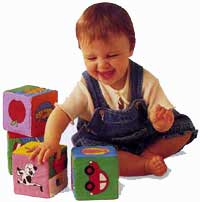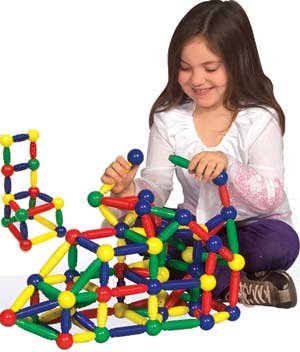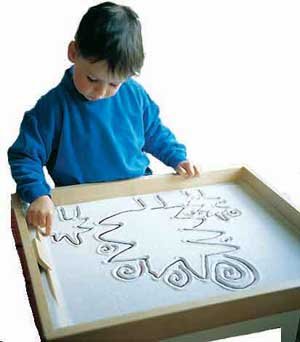by Erwin Segal
Department of Psychology, Center for Cognitive Science, University at Buffalo, Buffalo, NY 14260



What is Creativity? It is hard to pin down exactly what is to be studied in the psychological study of creativity. Is creativity a mysterious quality that some people seem to have, a gift from the gods, as the author of 'Amadeus' seemed to think about Mozart? Is creative thinking a kind of thinking that is different from ordinary problem solving and reasoning? Is creativity due to motivational properties, educational experience, intelligence, social environment, something else, or some combination of these? Differences of opinion, and differences of methods to study creativity abound.
Who is creative? Specific people have been identified by biographers, playwrights, and others as being outstanding creative people, usually because their performances or products have been deemed creative. Literature generally identifies certain inventers, scientists, musicians, artists, writers, etc. There is certainly no unanimity as to who should be so designated, but names that come to mind include Simone de Beauvoir, Pablo Picasso, Alexander Calder, James Watt, James Watson, Johannes Guttenberg, Wolfgang Mozart, Thomas Edison, Richard Feynman, Ludwig Beethoven, and Frank Lloyd Wright to name a few. Weisberg's (1993) Creativity, and Howard Gardner's (1993). Creating minds, are two books very different in tone that contain biographical sketches of creative people.
We can learn important things about the creative process and creative people from reading biographical sketches. Creativity does not spring fully grown as Athena did from the head of Zeus. It takes a great deal of nurturing and preparation. Even child prodigies such as Mozart took about 10 years of devoted study before the compositions he produced were considered high quality creative works. Creative people all seem to have had good social and intellectual support for their independence during their formative years. They show self confidence and independence in their thought, and they all worked very hard over long periods of time.
What is the relationship between expertise and creativity? According toWeisberg when one looks closely at the process of creation in creative individuals one finds that these "geniuses" are applying what they know to the task at hand. They are both knowledgeable and prepared. He claims that the novelty that is associated with creative geniuses is of exactly the same type as other 'normal' thinking. Differentiating creativity and world class expertise is neither easy nor obvious. In order to be a true expert or creative person, one seems to have to have a major commitment to the discipline. all world-class individuals seem to have great devotion to what they do, as well as the support of one or more significant others. The discipline seems to be all-involving with a huge number of hours devoted to the task at hand. Csikszentmihalyi (1988, 1990) calls such an optimal experience "flow." The activity is engrossing and its own reward. Notes on inventors
Some general questions about creativity: Can creativity be measured? There is evidence that creativity is not the same thing as intelligence. Reports are that one needs to be relatively intelligent to be creative, but not extremely so. The reports are that there is no correlation between intelligence and creativity, once IQ is above about 120. Guilford and others have come up with psychometric methods, which are reliable and are seen to be different from IQ, but these tests do not seem to correlate very well with any important behavior.
What is creative thinking? How does it differ from ordinary thinking? Some ideas about creative thinking are very popular. Following Guilford (1967) this is often identified as divergent thinking, which is contrasted with convergent thinking. De Bono called similar thought 'lateral thinking,' probably as compared to straight-forward or 'vertical' thinking. Rather than seek the correct answer, the person is supposed to find various solutions to a problem, the more solutions, and the more unlikely they are, the better. Questions such as "How many uses can you think of for a brick?" or "How many sentences can you think of that fits this pattern? W___ c___ e___ n___", or "List as many white edible things you can?" In addition, Creative thinking is supposed to help solve Gestalt type insight problems such as the 'six match problem,' the 'radiation problem,' or the 'incomplete chess board problem.'
Is creativity a learnable skill? There is a large industry to teach creativity. Many people attend classes in order to learn how to think and be creative. Many of the participants give glowing testimonials about them. Creativity training include learning such methods as Crawford's "attribute listing," Osborn's "Brainstorming," and De Bono's "CoRT program." De Bono no longer separates out creative thinking. He believes that purposive or goal directed thinking is at the core of creativity and it can be taught. notes on teaching creative thinking
There is, however, surprisingly little evidence based on external criteria that there is significant improvement in thinking in domains other than those in which the participants have been directly trained. Perhaps the reason that creativity training doesn't work is that whatever skills are learned need to be applied to a domain in which the problem solver has a great deal of knowledge. One cannot simply look at a problem as a set of propositions in a domain you do not know and solve problems in it. Can one teach general domain independent principles of creativity, or is it that even principles can only be taught in specific domains? Standard cognitive theory would support learning of effective procedures, which could be applied anywhere, but there is difficulty in finding such procedures or in knowing how to apply them in a new domain.
Are there social conditions that enhance creativity? Situations have been developed which are designed to enhance creativity, such as establishing "brainstorming" sessions, but there is no good evidence that any of these things do anything related to whatever most people deem really creative activity. Brainstorming may keep a group of people on a topic for awhile, but controlled studies suggest that the number of creative suggestions is large only because of the time spent. There is no enhancement of creative activity beyond what might have occurred if the individuals spent the same time on the given topic.
Creativity and Novelty: It has been suggested that in order for someone to be deemed creative, she has to find novel solutions to problems, or to generate a product which shows novelty. One problem with this analysis is that it is not clear what makes something novel. Being different is not enough to identify someone, or something, as creative. A creative solution to the problem has to both fit the domain within which it belongs and be considered novel, and the criteria for this are not clear. Someone has to argue that a solution is creative and convince others that the argument is sound. Thus, in order for someone to be deemed creative, or a genius, her performance or portfolio has to find an audience who makes that judgment. Without such an audience that person or work might be judged as merely competent, or even pedestrian.
Is creativity expertise plus something else? One possible take on the idea of creativity is that a creative individual is someone who is an expert in a domain, with the same set of conditions that are necessary to establish expertise: hard work, dedication, enthusiasm, self-confidence, practice and training. To be creative, however, there may be a particular kind of perspective that one takes on problems. This is what training in creativity tries to teach, but as with all important thinking, it must be done on top of background skills developed within a particular domain.
Additional sources on creativity:
Gable Sara, “ Creativity in Young Children..pdf “ University of Missouri, July, 2000 , Published by MU Extension, University of Missouri-Columbia GH 6041 Creativity in children
Children Who Are Gifted, Talented, and Creative Gifted & creative children
Creativity At Various Ages: PBS Parents Creativity differences
References:
Segal Erwin, Creativity, Syllabus. 2000. Segal: creativity
Csikszentmihalyi, M. (1990). Flow: The psychology of optimal experience. New York: Harper and Row.
Csikszentmihalyi, M. & Csikszentmihalyi, I. (Eds.) (1988). Optimal experience. New York: Cambridge University Press.
Gardner, H. (1993). Creating minds : an anatomy of creativity seen through the lives of Freud, Einstein, Picasso, Stravinsky, Eliot, Graham, and Gandhi. New York: Basic Books.
Guilford, J. P. (1967). The nature of human intelligence. New York: McGraw Hill.
Sternberg, R. J. (Ed.) (1999). Handbook of creativity. Cambridge, UK: Cambridge Univ. Press.
Weisberg, R. W. (1993). Creativity: Beyond the myth of genius. New York: Freeman.